Alberta
B.C. ranchers struggle as drought sends hay prices soaring
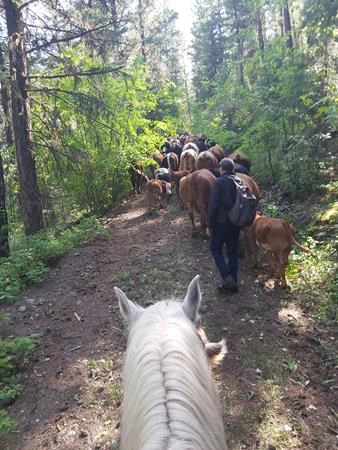
British Columbia rancher Suzanne Fradette had just got off the phone with a hay broker who had grim news amid an ongoing drought that has sent feed prices soaring: “It’s bad out there.”
“We’ve got a fairly small herd, like 140 head, but we are thinking it’s going to be about $100,000 this year for hay,” said Fradette.
That’s a 30-per-cent jump compared to recent years, and a painful price for a relatively small ranch.
Fradette runs the Back Valley Ranch ranch with partner Jerry Steves in the Deadmans’ area between Savona and Cache Creek, about 350 kilometres northeast of Vancouver.
Fradette said they are just “keeping their heads above water,” getting by one day at a time. Feeding their herd costs about $700 per day.
Fradette and Steves aren’t alone in their plight, with drought conditions pushing up feed prices across much of the country.
Agriculture Canada’s most recent drought monitor report says 76 per cent of the country’s agricultural landscape is either abnormally dry or experiencing moderate to severe drought this summer.
The B.C. Ministry of Emergency Management and Climate Readiness says most of the province remains at either Level 4 or 5 drought conditions, urging people and businesses to continue to conserve water, even as the first rain in more than a month falls this week on Metro Vancouver.
Low precipitation and historically early snowmelt have already pushed eight of B.C.’s 34 water basins into the worst Level 5 drought category, when all efforts should be made to conserve water and protect critical environmental flows. A further 13 are at level 4, meaning harm to ecosystems and communities is likely.
Fradette said that in previous years, her phone would be ringing briskly with offers of hay to feed her livestock, but things have changed this year.
“This time, I’m trying to phone around about it. There is no hay,” said Fradette.
Fradette said ranchers and farmers are struggling to get by.
“I always make the joke, I’m like, ‘I don’t want to be rich, rich. I just want to be change-my-oil-when-I-need-to rich.’ That’s our goal right there,” said Fradette.
Andy Wolfe operates Mount Lehman Farm, a family-owned beef ranch with 140 head of cattle in Abbotsford, B.C.
He said that thanks to “his farmer intuition,” he planned ahead this year to find three different suppliers to secure enough hay to cover him until next year.
“I basically took all the supply I could get from about three different local suppliers where normally I would be dealing with just one.”
Wolfe said loss of farmland to industrial usage led to shrinking production of hay, a problem compounded by the drought.
He said hay prices were skyrocketing. Large bales that cost $65 last year are now $130, said Wolfe, and even that price required negotiation with suppliers.
“Most people are paying way more,” said Wolfe, adding that some ranchers had to downsize their herd because of the hay shortage.
Although Wolfe said he has enough hay to make it through the year, he’s already worrying about next year.
“My concern is if this year’s drought is going to affect next year’s prices,” said Wolfe.
“I made it through this year and I am going to be OK this winter, but if the drought continues, I don’t know what I’m going to have to pay for hay. Next year is my biggest concern.”
This report by The Canadian Press was first published July 25, 2023.
Nono Shen, The Canadian Press
Alberta
Alberta government records $8.3 billion surplus—but the good times may soon end

From the Fraser Institute
By Tegan Hill
According to last week’s fiscal update, the Smith government recorded a $8.3 billion surplus in 2024/25—$8 billion more than what the government projected in its original 2024 budget. But the good times won’t last forever.
Due largely to population growth, personal income tax revenue exceeded budget projections by $500 million. Business tax revenue exceeded budget expectations by $1.1 billion. And critically, thanks to relatively strong oil prices, resource revenue (e.g. oil and gas royalties) saw a $4.7 billion jump.
The large budget surplus is good news, particularly as it will be used to pay down government debt (which taxpayers must ultimately finance) and to invest for the future. But again, the good times could soon be over.
Recall, the Alberta government incurred a $17.0 billion budget deficit just a few years ago in 2020/21. And it wasn’t only due to COVID—until the recent string of surpluses, the government ran deficits almost every year since 2008/09, racking up significant amounts of debt, which still largely persists today. As a result, provincial government debt interest payments cost each Albertan $658 in 2024/25. Moreover, in February’s budget, the Smith government projected more deficits over the next three years.
Generally, Alberta’s fiscal fortunes follow the price of oil. Over the past decade, for example, resource revenue has been as low as $2.8 billion in 2015/16, while oil prices slumped to $US45.00 per barrel, and as high as $25.2 billion in 2022/23, when oil prices jumped to $US89.69 per barrel.
Put simply, resource revenue volatility fuels Alberta’s boom-and-bust cycle. In 2025/26, the West Texas Intermediate oil price will be a projected $US68.00 per barrel with projected resource revenue falling by $4.9 billion year-over-year.
But oil prices don’t need to dictate Alberta’s fiscal fortune. Indeed, if the Smith government restrains its spending, it can avoid deficits even when resource revenues fall.
There are plenty of ways to rein in spending. For instance, the government spends billions of dollars in subsidies (a.k.a. corporate welfare) to select industries and businesses in Alberta every year despite a significant body of research that shows these subsidies fail to generate widespread economic benefit. Eliminating these subsidies is a clear first step to deliver significant savings.
The budget surplus is undoubtedly positive for Albertans, but the good times could soon come to an end. To avoid deficits and debt accumulation moving forward, the Smith government should rein in spending.
Alberta
Alberta Provincial Police – New chief of Independent Agency Police Service

Sat Parhar has been appointed as the first chief of the Independent Agency Police Service, marking the next step toward a new municipal policing option.
The appointment of a new chief for the Independent Agency Police Service (IAPS) marks the next step in giving municipalities a new option for local policing and builds on the work already underway for the agency to assume the police-like duties currently carried out by the Alberta Sheriffs. The IAPS will empower municipalities to adopt strategies that effectively respond to their specific safety concerns, enhancing public safety across the province.
Chief Parhar brings more than 25 years of policing experience, including senior roles with the Calgary Police Service, most recently as deputy chief. His frontline policing experience and deep understanding of Alberta’s complex and diverse public safety landscape positions him to lead the agency as it takes shape and begins its work as a new municipal policing option, keeping communities safe.
Once operational, the agency will strengthen Alberta’s existing policing model and complement the province’s current police services, which includes the RCMP, Indigenous policing services and municipal police. It will help fill gaps and ensure law enforcement resources are deployed efficiently to meet Alberta’s evolving public safety needs and improve law enforcement response times, particularly in rural communities.
“Appointing Chief Sat Parhar is a key milestone in Alberta’s plan to give municipalities a real choice in how their communities are kept safe. This is about building a modern police service that reflects the priorities of Albertans, strengthens local decision-making, and ensures every corner of our province, especially rural areas, can count on responsive, effective law enforcement. With his decades of experience and deep understanding of Alberta’s policing landscape, he is the right leader to bring this vision to life.”
“This appointment signifies a significant step forward in our efforts to establish a more robust, community-focused policing model that is better equipped to meet the unique needs of our local residents. Under Chief Parhar’s visionary leadership, we are confident that we will develop a modern, efficient police service that not only enhances public safety but also aligns closely with the priorities and values of Albertans. His experience and commitment are vital in shaping an IAPS that is responsive, transparent, and dedicated to fostering trust and collaboration within the community, ultimately ensuring a safer and more connected society for all.”
Chief Parhar’s immediate priorities will be to hire an executive team and commence organizational planning such as developing key recruitment, training and other operational policies. Chief Parhar’s appointment is the first step of many to establishing the IAPS.
“It’s an honour to take on this role and help shape a modern police service built for Alberta. My focus from day one will be on setting high standards for professionalism, building strong relationships with our partners and ensuring this service reflects the needs and priorities of the communities we serve.”
The Independent Agency Police Service was formally created through regulation following the passing of Public Safety Statutes Amendment Act, 2024. The agency will operate as an independent Crown corporation, and will be renamed the Alberta Sheriffs Police Service, with its head office located in Calgary. The IAPS will be operationally independent from the provincial government with civilian oversight, consistent with all police services in Alberta.
“When it comes to policing, municipalities like ours deserve a choice – especially when the current system leaves us disadvantaged simply because of our size. We look forward to learning more about what that alternative will look like once an Alberta police agency is fully established and the options are clear. For us, this is about fairness, sustainability, and ensuring municipalities have access to policing solutions that reflect both their needs and their realities.”
Quick facts
- The regulation establishes the IAPS Provincial Corporation and its governance structure including board of directors, board of director powers, financial responsibilities and accountabilities.
Related news
- Expanding municipal police service options (April 7, 2024)
-
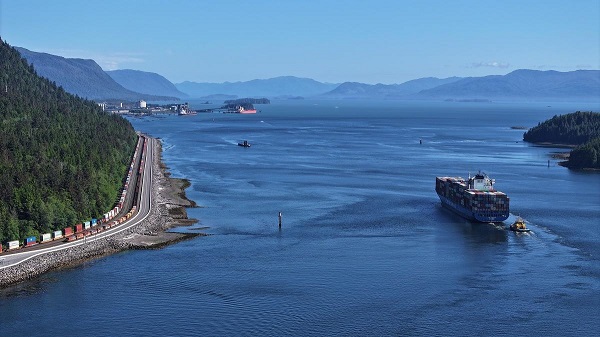
 Business1 day ago
Business1 day agoWhy it’s time to repeal the oil tanker ban on B.C.’s north coast
-

 Crime1 day ago
Crime1 day agoBryan Kohberger avoids death penalty in brutal killing of four Idaho students
-

 International2 days ago
International2 days agoCBS settles with Trump over doctored 60 Minutes Harris interview
-
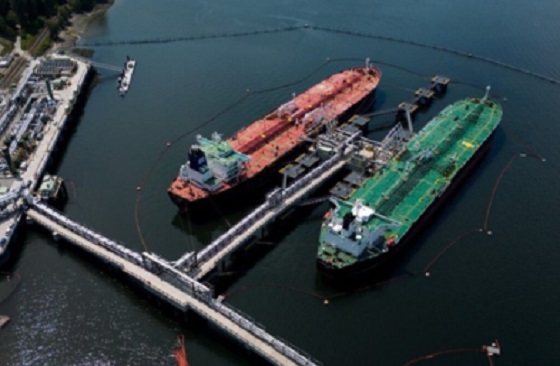
 Energy1 day ago
Energy1 day agoIf Canada Wants to be the World’s Energy Partner, We Need to Act Like It
-
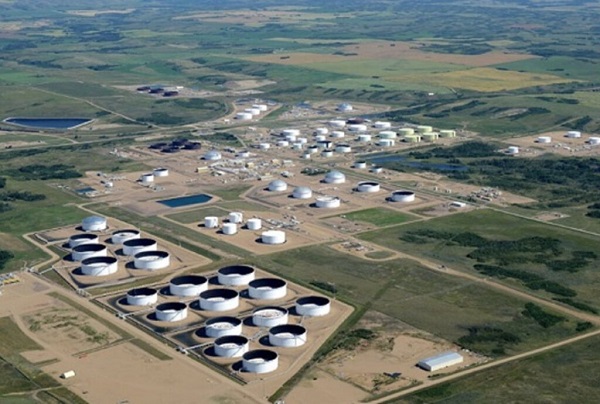
 Alberta1 day ago
Alberta1 day agoPierre Poilievre – Per Capita, Hardisty, Alberta Is the Most Important Little Town In Canada
-

 MxM News1 day ago
MxM News1 day agoUPenn strips Lia Thomas of women’s swimming titles after Title IX investigation
-
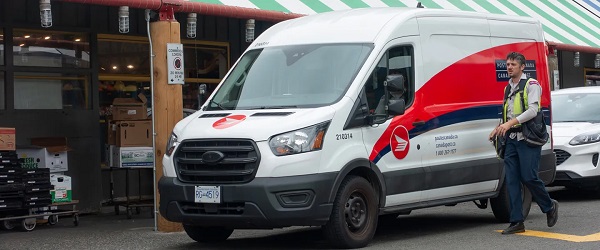
 Business1 day ago
Business1 day agoLatest shakedown attempt by Canada Post underscores need for privatization
-

 Alberta1 day ago
Alberta1 day agoAlberta Provincial Police – New chief of Independent Agency Police Service







